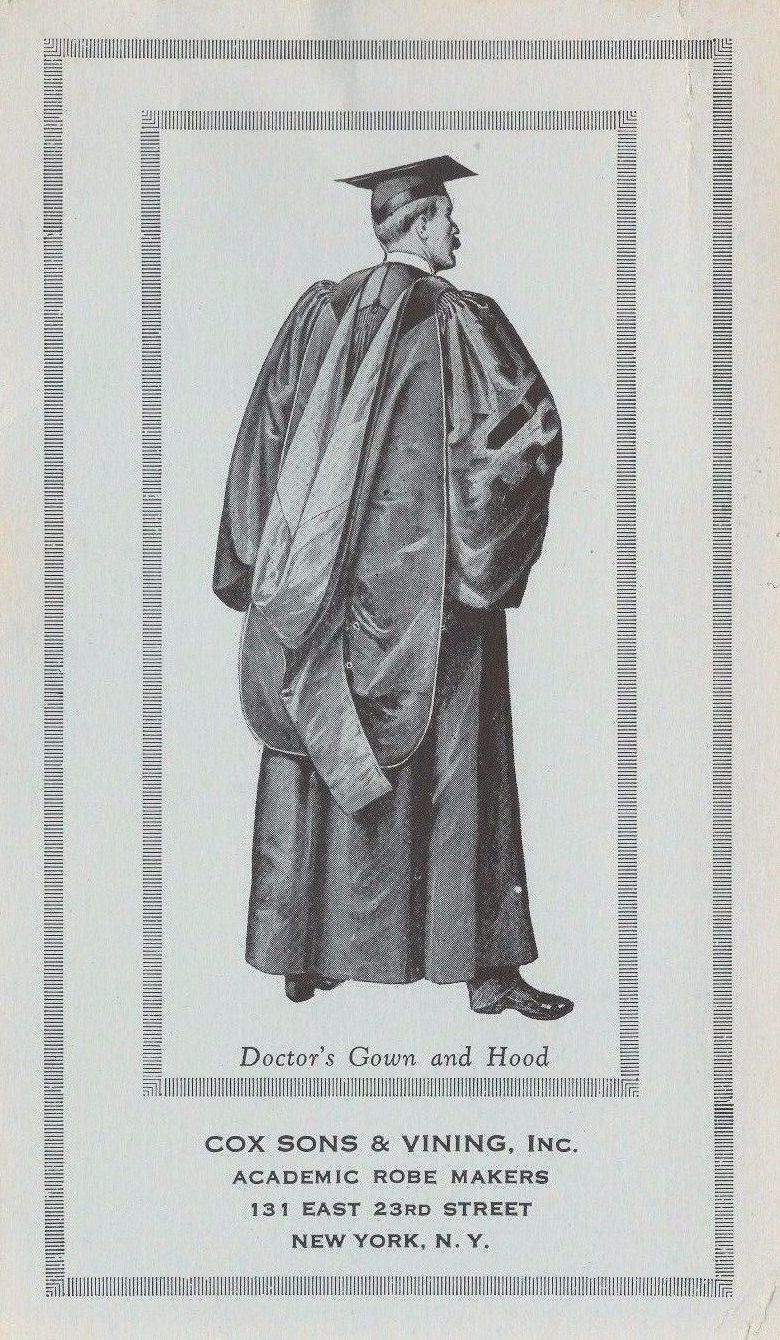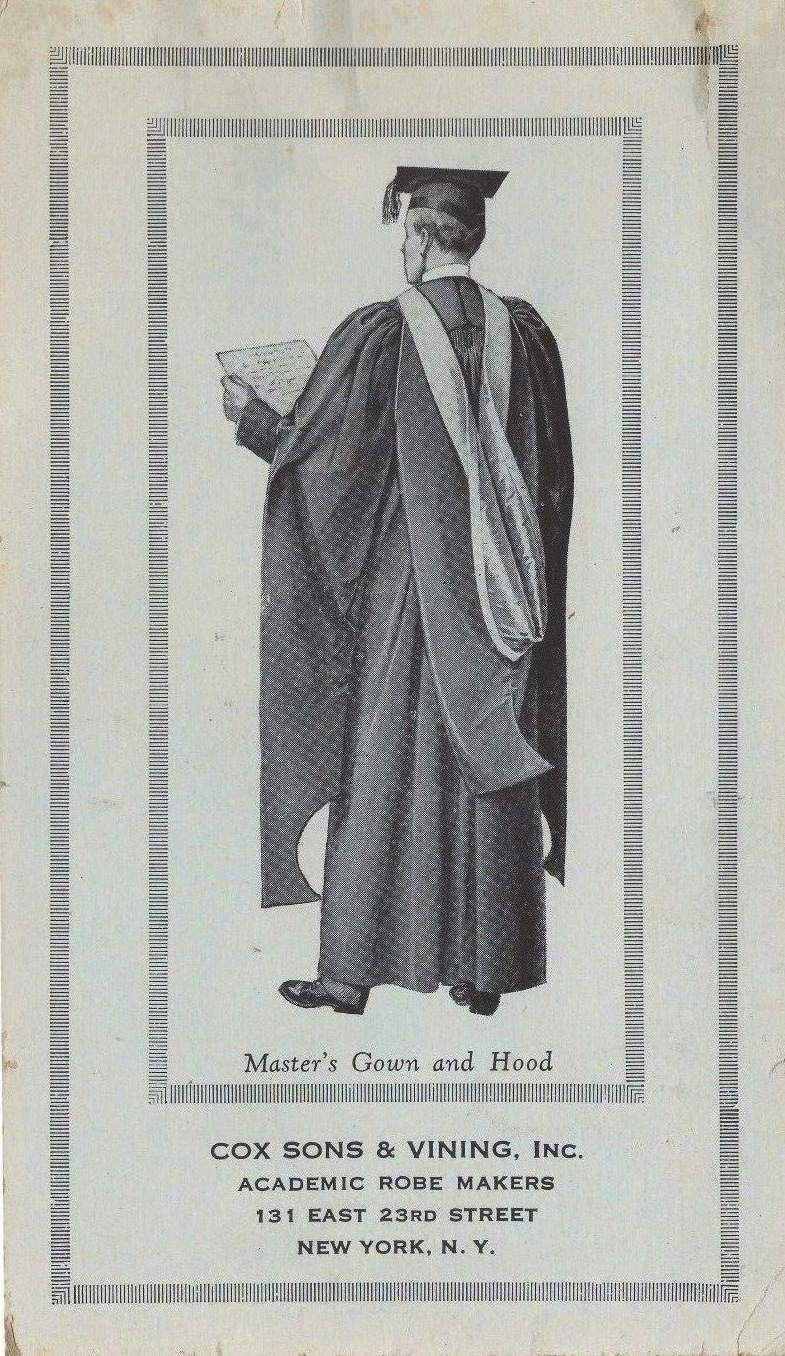
“Academic costume is dignified and effective just in proportion as it is correct in type and color. Unless it conforms exactly to the established standards, the use of it degenerates into meaningless display.”
from Concerning Caps, Gowns and Hoods Bulletin 17 (c.1902) by Cotrell & Leonard
A traditional part of university life is the pageant of colorful gowns, hoods, and caps that faculty and students wear at graduation ceremonies to communicate their scholarly achievements. Alumni who teach at other universities continue to wear this regalia as a means of expressing pride in their alma mater. The designs of these academic garments are derived from centuries of higher education costume in Europe and the United States.

British academic dress varies from university to university, but in the United States the Progressive Era zeitgeist for reform and institutional standardization inspired representatives from a group of east coast universities to draft the Intercollegiate Code of Academic Costume in 1895. These rules standardized our system of regalia during a time when many schools were beginning to emphasize their historic roots (or create them where they didn’t exist), commissioning buildings in revivalist architectural styles, formally embracing various collegiate rituals, and adopting populist symbols of university pride – official school songs, mottos, colors, mascots, and so on – as increasing numbers of middle class students began to enroll in college.
The Intercollegiate Registry of Academic Costume is dedicated to encouraging the dignified and effective use of American academic regalia by promoting the standards established by the 1895 Intercollegiate Code of Academic Costume and by documenting and preserving the history of early academic costume in the United States.